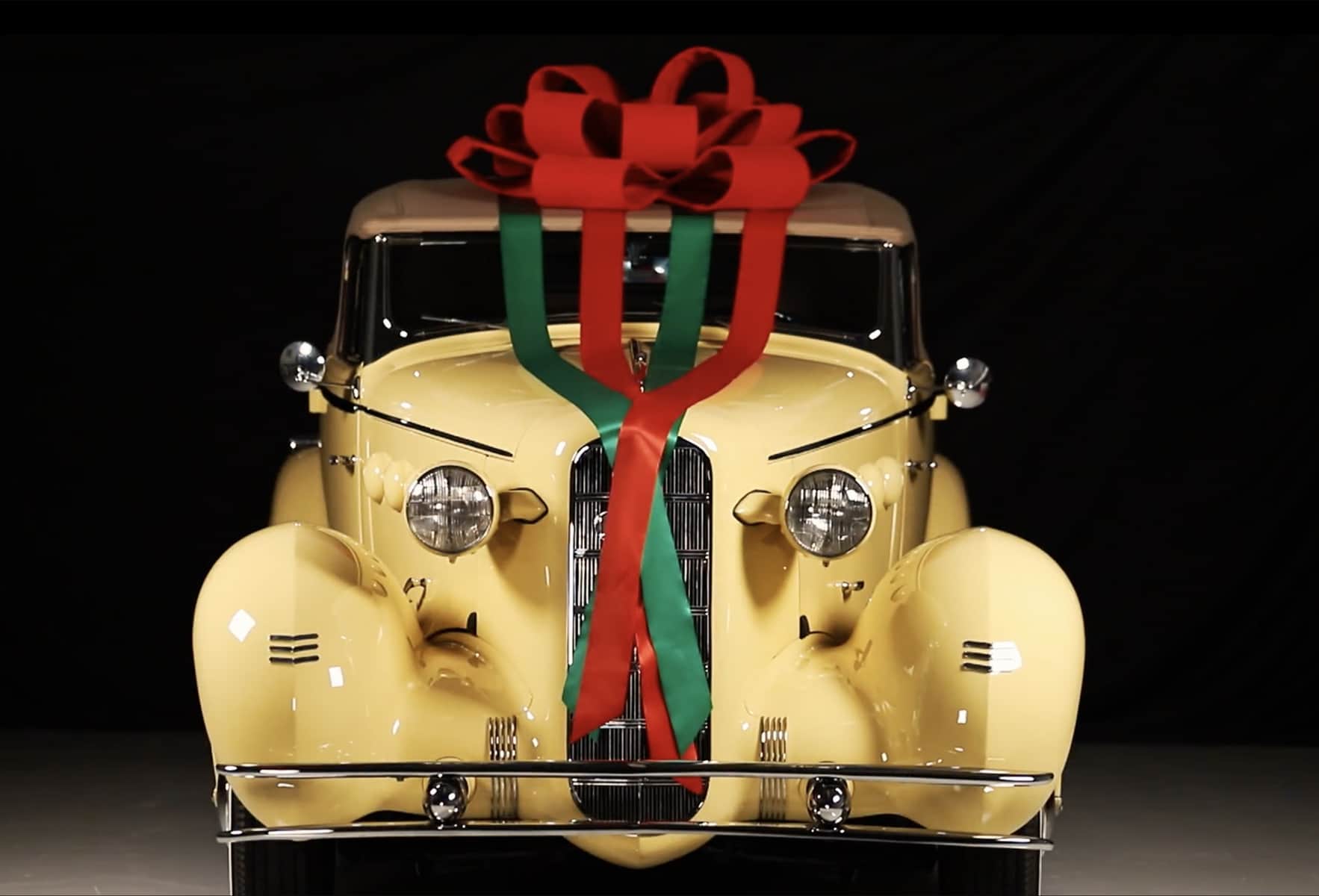Petunia Looks a Lot Like Christmas
A Yuletide tale of hope and joy
BY: MILES C. COLLIER
PHOTO: REVS INSTITUTE
My wife, Parker, and I have had a running Christmas joke for years. To her question, “What do you want for Christmas?” I have invariably replied, “A little blue sports car.”
The joke is that while such an answer always refers to a 3-liter Gordini racing sports car from the 1950s, no such little blue sports car, or at least the keys to one, will ever appear beneath the Christmas tree. Many fanciful variations of the terminology have manifested in the form of miniature plastic cars, ties bedecked with blue sports cars, car cookies with blue icing, but never one of the masterpieces of le Sorcier, (the Wizard) as Amédée Gordini was called.
A few years ago, I sold my Duesenberg SSJ, one of just two such fabulous cars ever made, to both fund and demonstrate commitment to some projects in the automotive space that I was doing with Parker. While the proceeds were entirely gratifying, I have felt bereft of the SSJ ever since. I have just finished writing my book, The Archaeological Automobile, and one section deals with collecting. I speak from real experience when I say that parting with a much desired and special piece from a carefully built collection can be a source of long-term distress. It certainly was in my case.
I keep a running mental list of potential additions to my collection. Consequently, I was able to engineer some compensation for my loss in the form of a long-desired 1934 Chrysler Airflow Imperial CV coupe. The CV Airflow coupe had been one of the longest standing entries. It is the manifestation of the art deco aesthetic, and the best-looking Airflow of all. They may not be to everyone’s taste, but the Art Deco, chrome tube interior seats, the crank-open windscreen, the waterfall grille, and the general freshness of the styling when compared to other cars of that period have, for me, made Airflow coupes utterly desirable.
Of course, we also need to be cognizant of the other American styling masterpiece of that same year: the LaSalle convertible coupe. Here is the other book end to Detroit styling in 1934. Many consider it as arguably the most beautiful American car of the inter-war years. The story starts with LaSalle being discontinued for the 1934 model year due to low sales numbers. Harley Earl, GM’s styling honcho, had earned his design-czar position thanks to his creation of the initial LaSalle model for its brand introduction in 1927. Based on what followed, we can imagine that he took the corporate decision to kill his baby as a personal affront. Despite the “kill” decision, Earl had the GM Art and Color Section design a 1934 LaSalle model anyway. He secretly brought it to the 1934 model year design review meetings with top management. When it came time to shift attention from the proposed Cadillac models to Buick, the gap the LaSalle had been created to fill, Earl announced, “Gentlemen, I’d like to show you the car we will not be building for 1934.” One of Earl’s minions whisked the silk drape off the “dead on arrival” LaSalle mock-up. Stunned silence held for a long moment and then came gasps of excitement. Two years later, prominent in GM’s model line-up for 1934 was the fabulous new LaSalle.
Consequently, it was not just the Airflow that has held long tenure in my mental museum, but also the LaSalle, which I always saw as being inseparably connected to the Airflow. One could not exist without the other. Like Chrysler Airflow Imperial CV coupes, 1934 LaSalle convertible coupes are hard to find. In all my years of mooching through auctions, I had seen exactly one for sale, and it needed pretty much everything. But what a cornucopia of design with which to contrast the Art Deco Airflow: biplane blade bumpers; “Buck Rogers ray-gun” taillights; bullet headlights; pontoon fenders; sinister chopped windscreen; and those ever-so Deco porthole appliqués on the bonnet.
My wife had probably heard my Airflow-LaSalle pairing ideas more times than she could count.
In continuation of our long-standing repartee, I asked for a little blue sports car for Christmas expecting socks. Come Christmas, which we were spending in snowy Montana, we exchanged gifts (yes, I got socks) and then Parker said, “Oh, there’s one more thing you need to see.” She rolled this film.
When I was finally able to speak, she asked me what we should name the car. I said, “Beyond a doubt, Petunia.” And so it was.
Merry Christmas and Happy Holidays.





